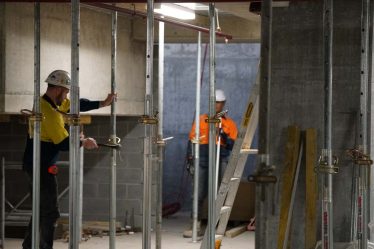
Water damage is one of the most disruptive and costly issues a business can face. Commercial buildings are more likely to experience severe water-related disasters than residential ones because they frequently have larger square footage, more complicated plumbing systems, and higher occupancy rates. Understanding the top causes of commercial water damage is essential for prevention. Timely commercial water damage restoration ensures that businesses not only recover from unexpected leaks or floods but also avoid long-term structural and financial setbacks. Just as important is knowing how restoration experts step in to resolve the issue efficiently and get your operations back on track.
Typical Reasons For Water Damage In Business Structures
1. Burst Or Leaking Pipes
A leading cause of water damage in commercial properties, pipe failures can result from corrosion, freezing temperatures, or general wear and tear. Since commercial buildings often have expansive plumbing systems running through multiple floors and walls, even a small leak can affect a wide area before it’s detected.
2. Roof Leaks And Drainage Issues
If you don’t take care of your roof properly, rainwater can get inside, especially during storms or when the snow melts. Clogged gutters or downspouts can make the problem worse, causing water to pool and eventually seep into the building.
3. HVAC System Malfunctions
Commercial HVAC systems work hard year-round to regulate indoor temperatures, and when condensation lines or drainage pans become clogged or cracked, water can leak and cause damage to ceilings, floors, and mechanical rooms.
4. Appliance Failures
Office kitchens, breakrooms, and laundry areas may be equipped with refrigerators, dishwashers, or washing machines. Large volumes of water may leak into the surrounding area when these appliances break down or the hoses come loose, especially if the leak happens after business hours.
5. Sprinkler System Problems
While essential for fire safety, sprinkler systems can cause significant water damage if accidentally triggered or if they leak due to corrosion or system failures. One broken sprinkler head can easily flood an entire floor if not addressed quickly.
6. Natural Disasters And Severe Weather
Heavy rains, flash floods, and hurricanes can all overwhelm a building’s defenses. If the property is not adequately sealed or lacks adequate drainage, outside water can easily make its way inside, causing widespread damage to flooring, walls, and equipment.
7. Sewer Backups
A sewage backup is not only a messy problem but also a hazardous one. Commercial buildings with outdated sewer lines or those located in flood-prone areas are at a greater risk of backups, which can lead to contaminated water infiltrating the workspace.
How Restoration Experts Respond To Commercial Water Damage?
When a water disaster strikes, professional restoration experts are trained to act quickly and thoroughly. Here’s how they help businesses regain control:
- Rapid Assessment And Mitigation
Restoration professionals conduct a detailed inspection to determine the source and extent of the water damage. This allows them to create a strategic response plan tailored to the specific situation. They also begin mitigation efforts immediately to prevent the damage from spreading.
- Water Extraction And Drying
Using industrial-grade pumps, vacuums, and dehumidifiers, experts remove standing water and dry out affected areas. This step is critical to avoid secondary damage, such as mold growth and structural deterioration.
- Damage Cleanup And Sanitization
After the water is removed, professionals clean and sanitize all affected surfaces. This keeps the building safe for both staff and patrons by getting rid of bacteria and smells.
- Restoration And Repairs
Depending on the extent of the damage, the final stage may involve repairing drywall, replacing flooring, restoring electrical systems, or even reconstructing damaged areas. Restoration experts work to return the space to its pre-loss condition as efficiently as possible.
- Documentation For Insurance
Experienced restoration companies also provide detailed reports, photographs, and cost estimates to support your insurance claim, helping to streamline the reimbursement process and reduce administrative stress.
Final Thoughts
Numerous factors can lead to commercial water damage, many of which can be avoided with routine upkeep and early detection. When disaster strikes, restoration experts bring the skills, tools, and urgency needed to mitigate damage and restore operations. Being proactive and knowing who to call in an emergency can save your business time, money, and future headaches.


